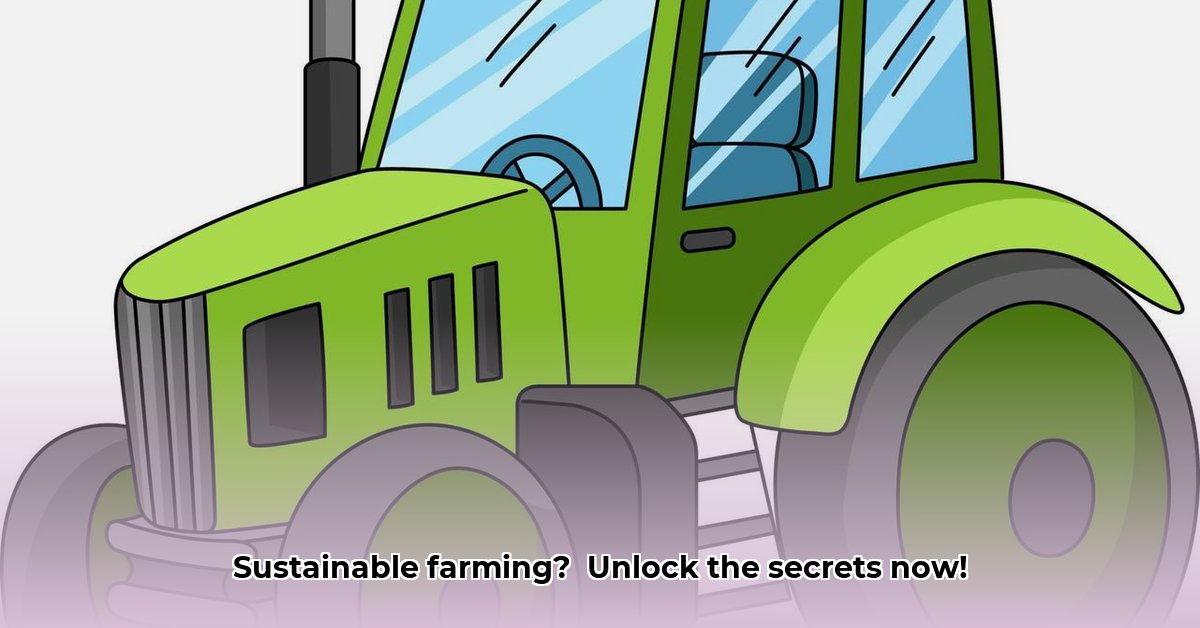
Picking the Perfect Clip Art Tractors for Your Lessons
Choosing the right clip art is vital for effective teaching. Forget outdated imagery; instead, select tractors that reflect modern sustainable practices. Look for visual representations of:
- Alternative Energy Sources: Solar-powered tractors, electric tractors, or those using biodiesel. These visuals instantly communicate environmentally conscious farming.
- Precision Farming Techniques: Images showcasing GPS-guided planting, automated irrigation, or other technology-driven methods.
- Diverse Farming Practices: Include tractors working with diverse crops, showcasing crop rotation, intercropping, or other sustainable strategies. This highlights the breadth of sustainable agriculture.
For more resources, check out this helpful website: Sustainable Farming Resources. Where to find these images? Numerous royalty-free websites offer a wide selection. Always check licensing agreements to avoid legal issues. Remember, high-quality, relevant imagery is key to creating engaging learning materials. A poorly chosen image can undermine your entire lesson.
Integrating Clip Art Tractors into Engaging Lesson Plans
The key is to make learning fun and relevant. Here's how to incorporate those clip art tractors into different age groups' lessons:
1. Elementary School (Ages 5-10):
- Matching Games: Create simple matching cards pairing a clip art tractor with its fuel source (solar, electric, etc.).
- Storytelling: Use tractors as characters in stories about sustainable farms. Encourage children to create their own narratives, enhancing comprehension and creativity.
- Coloring Pages: Design coloring pages featuring tractors performing different sustainable activities. A fun, low-pressure way to reinforce learning.
2. Middle School (Ages 11-14):
- Presentations: Students can create presentations on precision agriculture using clip art tractors to illustrate concepts like GPS-guided planting.
- Interactive Games: Design games (digital or physical) where students solve problems related to sustainable farming practices.
- Creative Writing: Encourage fictional stories about tractors and the challenges of sustainable farming.
3. High School & Beyond (Ages 15+):
- Infographics: Students can create infographics illustrating the benefits of sustainable farming practices.
- Case Studies: Use clip art tractors to illustrate real-world examples of successful sustainable farms.
- Debates: Structure class debates on the merits of sustainable farming practices, using the clip art as visual aids to enhance discussion.
Always adapt the complexity to the students' age and understanding. The goal is to create an engaging learning environment where children actively participate. Aren't visually engaging lessons more effective than dry lectures?
Creating Visually Appealing Lesson Materials
Don't just slap clip art onto a page. Think about visual storytelling.
- Composition: Arrange the tractors to tell a story – a sequence of sustainable farming practices.
- Color Palette: Use a nature-inspired color scheme – earthy tones, greens, yellows – to create a visually appealing and thematic approach to your lessons.
- Additional Elements: Include elements like healthy soil, thriving plants, and happy farmers to create a holistic and positive image.
Remember, effective visual communication is key to making your lessons memorable. Are visually stimulating lessons more effective than those lacking visual interest? Research suggests they are.
Assessing Lesson Effectiveness and Making Improvements
Evaluating your lessons is crucial for continuous improvement. How can you determine if your lesson plans, incorporating clip art tractors, are successful?
- Observe Student Engagement: Are students actively participating and asking questions?
- Assess Understanding: Use quizzes, discussions, or projects to evaluate comprehension.
- Gather Feedback: Ask students for feedback on the visuals and the overall learning experience.
Use this feedback to refine your lessons. Effective assessment leads to effective teaching. Shouldn’t continuous improvement be a core component of any educational strategy?
Conclusion: The Power of Simple Imagery
Clip art tractors, though seemingly simple, are powerful tools for teaching sustainable farming practices. By carefully selecting images, crafting engaging lesson plans, and assessing their impact, you can transform dry lectures into memorable learning experiences. It's all about harnessing the power of visual communication to cultivate a deeper understanding of sustainable agriculture. Let’s make learning fun!